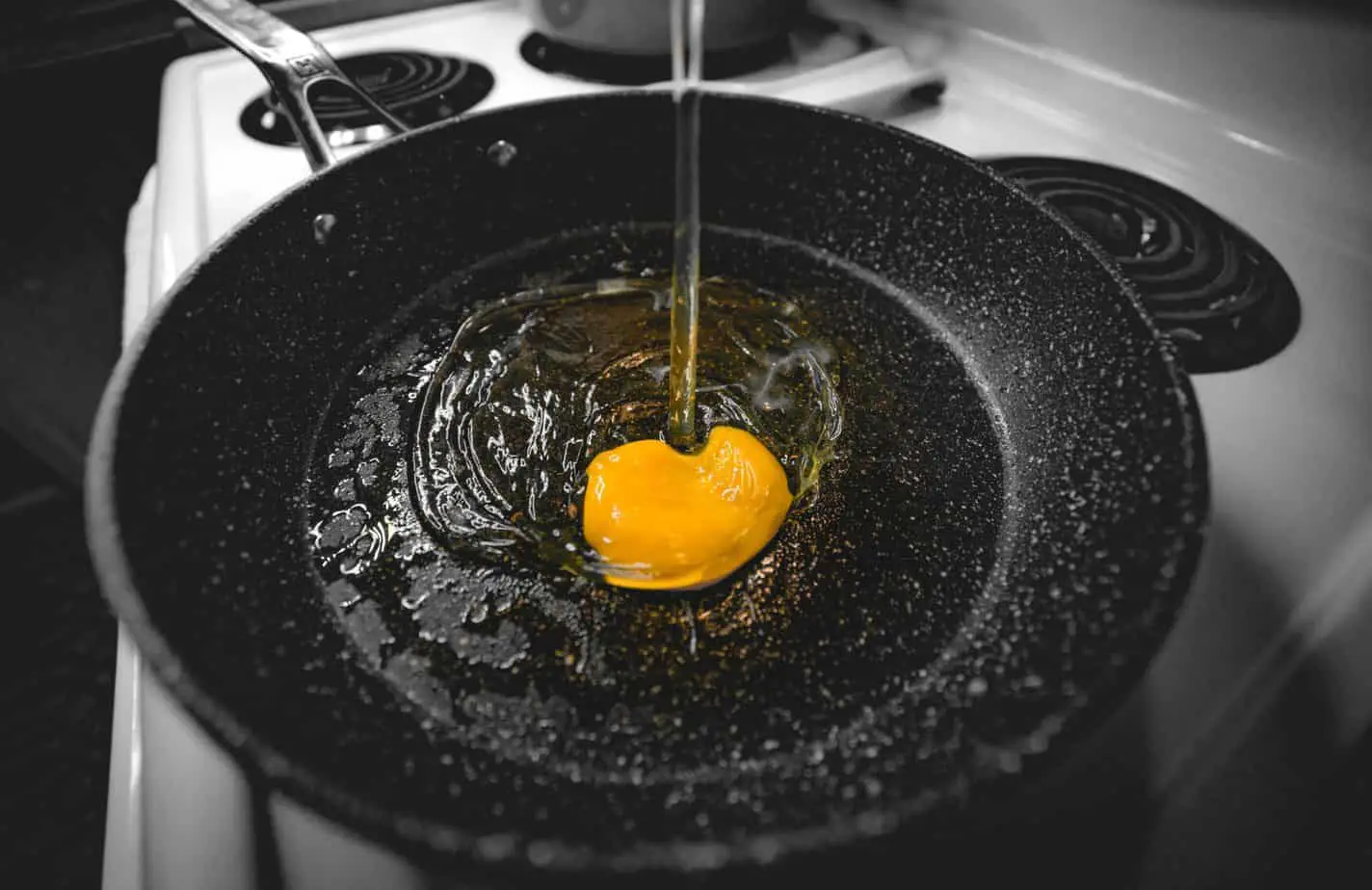“An ounce of sauce covers a multitude of sins”
-Anthony Bourdain
Ahh eggs, the perfect go-to breakfast staple for that special someone tucked under your linen duvet after a night of sinful romancing. Or the perfect morning “pick me up” (aside from coffee of course) for that quick go-to scrumptious meal in the morning.
It’s a wholesome perishable no doubt- and a staple in the culinary arts us men must be equipped to know.
But something so simple surely can’t be hard to make perfect…can it? That’s the question I asked myself since the days of being taught by mum, as despite learning how to cook a fried egg, at times I still somehow manage to mess it up (the shame I know.)
The truth is to make the perfect fried egg without burning the bottom is not hard per say, but like most cooking, requires a little TLC (Tender Loving Care.) And so through this, I discovered some non-professional “professional AF” tips for you all to try.
In order to cook a fried egg without burning the bottom, make sure your pan is kept at low-medium heat. Also if possible, try to use a smaller model pan with a thicker bottom rather than a thin one. A thicker bottom will ensure heat to be evenly distributed throughout the pan- meaning everything will cook at the same rate of speed.
A visual guide on how to actually do it
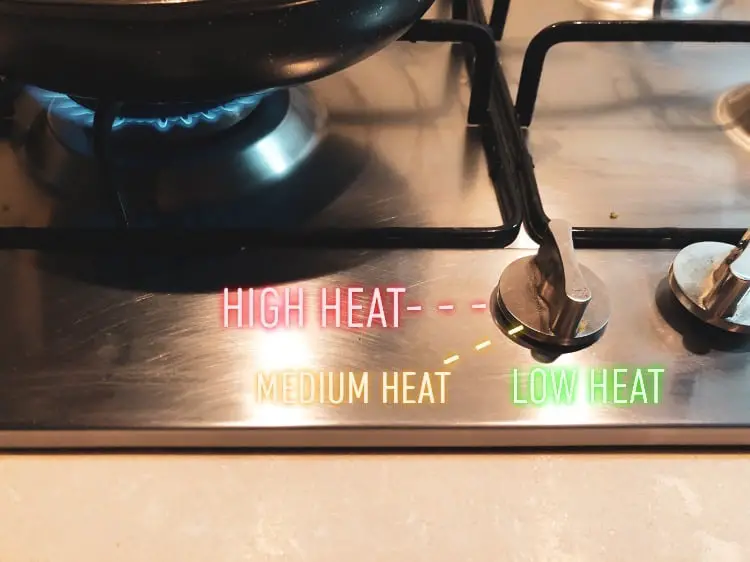
As you can tell my stove dial is turned down firmly to low heat, even medium would be acceptable. High heat, however, is way too unpredictable for your eggs and in my experience results in a “flip of the coin” type outcome, a gamble at best.
What about different types of pans?
Okay so there are alot of pans out there, and the one in the picture isn’t the ONLY one you could use. But we’re talking about eggs here, people. None of tht “multi-century warranty wrought iron skillet forged from a single piece of metal yada yada…”-none of tht nonsense.
Something easy to clean with little maintenance or fuss required and something relatively cheap- that’s all you need. But let’s break it all down.
To start off with you have generally three types of common place pans:
Iron Pan
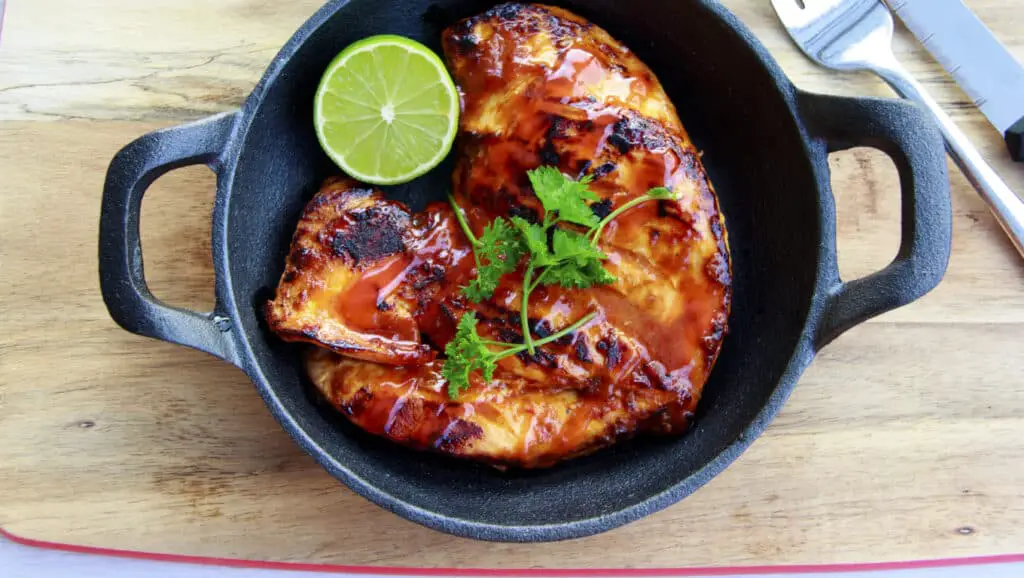
Pros: Highly durable, can be exposed to high heats, lasts a lifetime with most major brands offering “multi century warranties” (yes you heard that correctly), offers a degree of “non-stick” and is even oven friendly.
Also according to many people (including my grandma)- claim that a “special flavour” is usually to be developed after years of use (take from that what you will.)
Cons: Requires ALOT of maintenance and special upkeep, including using oils for cleaning instead of soap. I’ve tried this a few times before…it was not pleasant.
Can it cook a fried egg without burning it’s booty?: Of course, just add in a couple of cups of oil in the pan- Oh sorry…did I say cups?….I meant cubic tons. Import all of Italy’s olive oil supply and pour it in your pan, GO!
That should juuuuuust be enough to make sure your eggs don’t get stuck and/or burnt as a result of you using an iron pan.
Non stick Pan (Ceramic or Teflon)
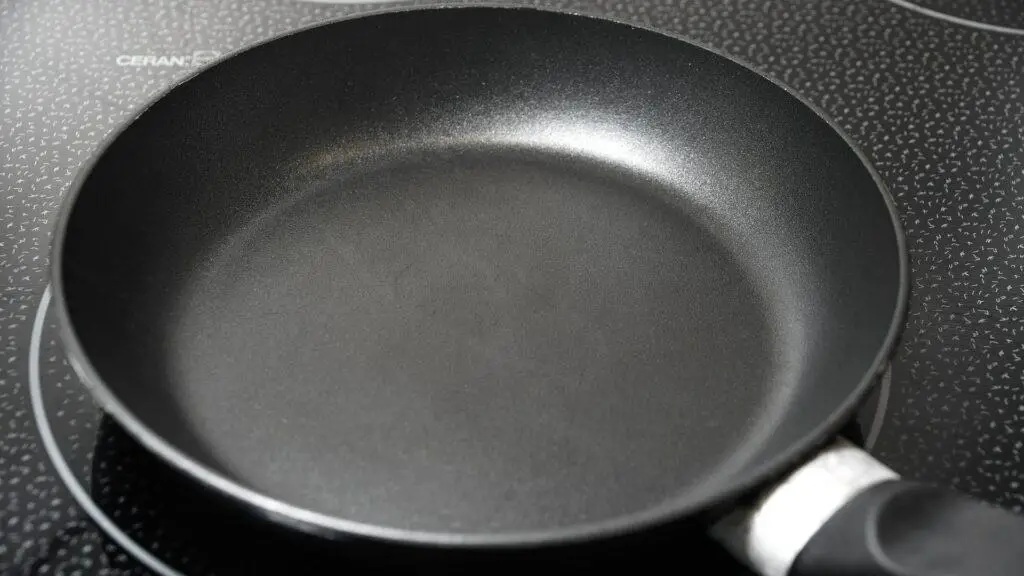
Pros: A simple staple pan, quick to heat and cool off. Easy to wash with little soap required, MUCH more affordable than anything on the list, and usually requires little to no cooking oil (however this is highly dependent on user upkeep over time.)
Overall a great pan (my personal favorite) for amateurs and everyone in between, mainly due to it’s low price point and considerable reliability with little to no maintenance required.
Cons: Will never last as long as an iron or non-stainless steel pan. The integrity of a non-stick can also be much more easily damaged by exposure to high heat. Some cheaper models are not oven friendly as well as some spatulas can’t be used on specific models (eg. metal utensils can easily ruin the surface of a non-stick.)
Also none are dishwasher friendly (the load of salt from the machine will most likely ruin the non-stick coating.)
Can it cook a fried egg without burning its booty?: Yes, it most certainly can. Low to medium heat will ensure your eggs are cooked evenly, quickly, and with little to no oil needed. Though this is rarely a concern for me personally anyway as I use Olive oil/PAM type sprays for my cooking (something to consider perhaps.)
Something to note: Teflon or PTFE (the material used to make the pan “slippery”) has been linked to cancer (as an acid used in the creation of PTFE called “PFOA”) has been classified as being “possibly carcinogenic to humans.” However, it should be noted that the level of exposure to such chemicals is small, as well as the studies proving the correlation of this have been so far based upon limited findings. Your best bet is to stick to non -stick ceramic, as it is PFOA and PTFE free.
Stainless steel pan
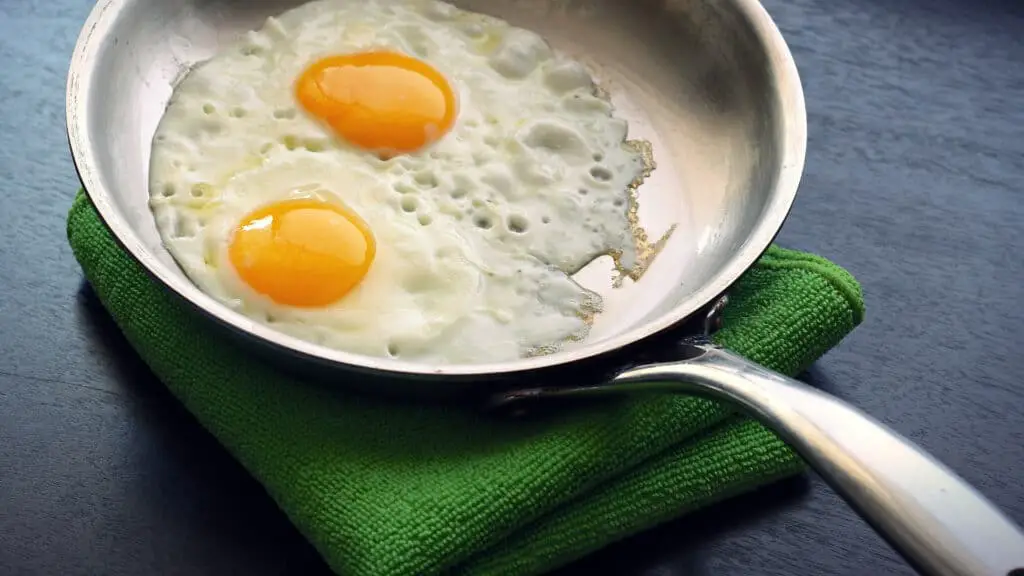
Pros: The most rugged of the bunch and considered an industry standard within most kitchens. Why? Well, it’s mainly because you can bash, throw and scratch it around more than a self-hating masochist.
High resistant to heat, dishwasher proof, metal utensil friendly (you could use a samurai sword to flip steaks and it’d still probably hold up.)
Cheaper than iron pans and distributes heat evenly well, along with most being “conduction compatible” (meaning if you’ve got an electric stove then this pan will fit right at home.)
All-round it’s just a more modern variation of a classic iron pan.
Cons: Harder to cook in as it does little to even try to be non-stick- which obviously means that this pan is for pros (or at the very least for oil heavy gourmet meats and gorgeous Vidalia caramelized onions.) It’s a pan that can take a beating, from you or Gordon Ramsay’s foul-mouthed kitchen…overall it’s a beast.
Though prepare to allocate a gucci handbag’s worth in luxury cooking oils and/or butters if you dare try to cook in one of these.
(Like i said- it’s for the pros, meaning it’s a little bit harder to cook in.)
BUT can it cook a fried egg without burning its booty? Let’s see…

Yes!
TECHNICALLY it can… but like i said it’s not as forgiving as it’s non-stick counterpart. So while the stainless steel model is a great pan overall, it’s a little overkill and impractical for egg making, and your non-professional ass still might burn the bottom of your eggs in the process…
What type of pan do I actually use?
Instead of telling you what I found, I’ll show you what I use. What’s been working for me all this time.
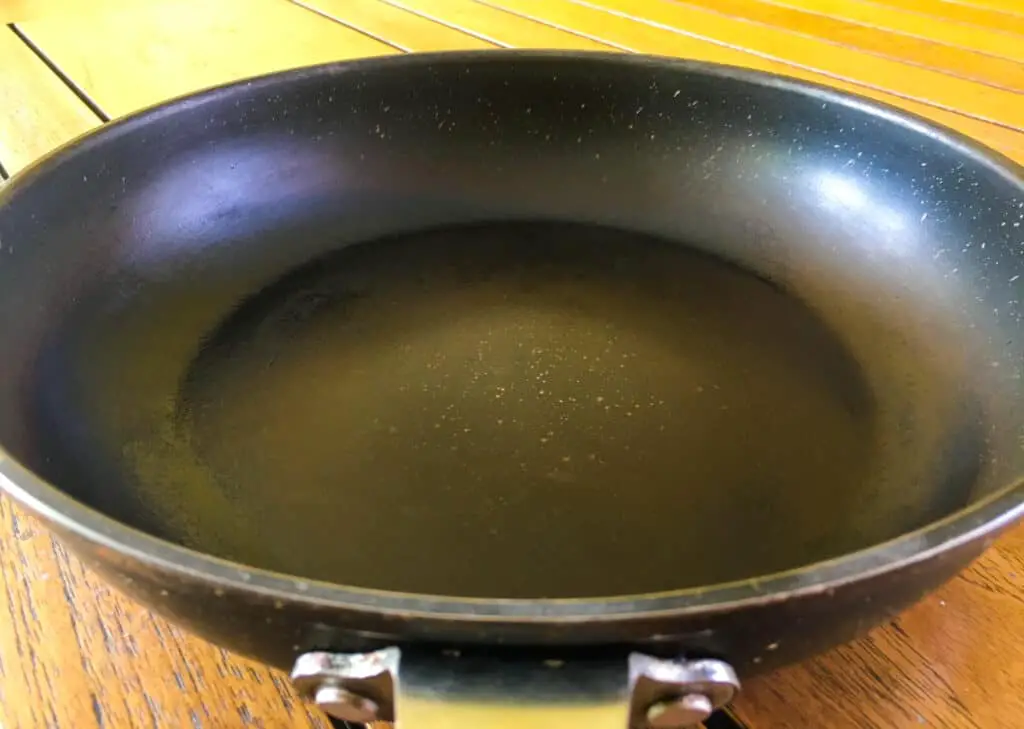
Ceramic non stick is pan of choice, the exact model I forgot and the branding has been scathed off after years of use, so, unfortunately, we’ll never know.
However something like this would do (this is not an affiliate link, I just liked the model for the price point.) It has a durable aluminium reinforced base, which is quite practical for cooking as this means the heat will evenly distribute.
Tip: Like above, I’d almost always argue for a heavy bottom pan that doesn’t reign TOO heavy on the scale, in case you wish to practise the devil’s work in the kitchen-as in tossing and flipping the likes of eggs/omelettes and other breakfast dishes all “magic-like” in the air…in that case it’d be smart to get a lighter pan.
Will any cooking spatula do?
Again, instead of telling you what I found, I’ll go off of what I’ve been using. It’s a little weird, but it’s amazing. I wouldn’t trade this model for the world.
(Warning: I’ve never checked, but I’m fairly certain this spatula is meant for baking…oh well.)
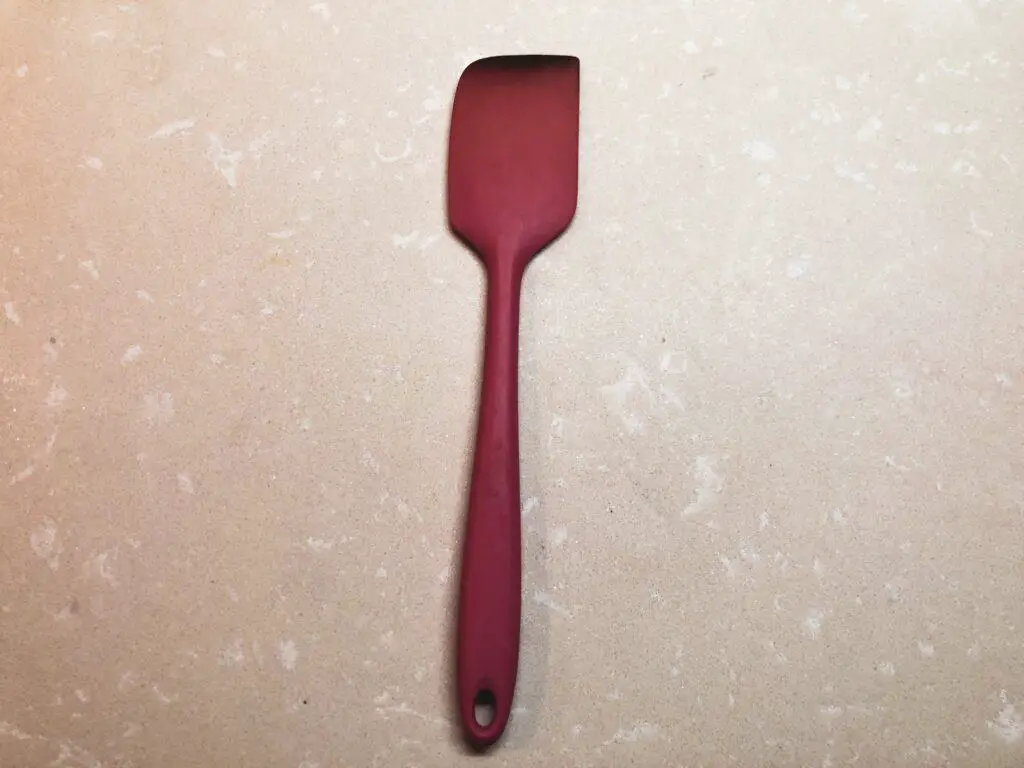
As you can see it’s a silicone spatula in “manly pink”. It’s easy to use, easy to clean, ambidextrous grip (as your boi is a lefty so this matters) and I’m even told by google that it can withstand temperatures of up to 315 degrees C (or 600 F.)
Okay okay I’ll stop fanboying, this one’s really good tho! But ultimately yes ANY spatula will do, after all it’s only eggs.
Pro Tip:

To avoid getting eggshell in the pan, crack your eggs at an angle rather than straight on. By doing it this way the shell is less likely to crack inversely.
How to not burn the bottom of your fried egg EVEN FASTER

I’m an impatient individual, and top it off I’ve come to realize over the last few months that I get angry when my tummy rumbles, or to put it more aptly, I get HANGRY.
So over time, I’ve found small ways to speed up the breakfast process a smidge (so as to not put the world in danger daily from my destructive hunger pans.)
Tip 1: Cover your egg while it cooks!
To cook your egg even faster, cover it almost immediately, then keep it covered for about 40 seconds or so, still while on low-medium heat. The 40-second benchmark is to ensure a lovely skin encases the top of the yolk whilst still remaining “loose” on the inside-win win.
Also by doing it this way you properly cook the nasty “gloopy” bit of the egg (you know the part on the egg that never seems to really cook properly-dare I say it mirrors an “embryotic sac”. Anyways by doing it this way you make sure you “sac” is cooked.)
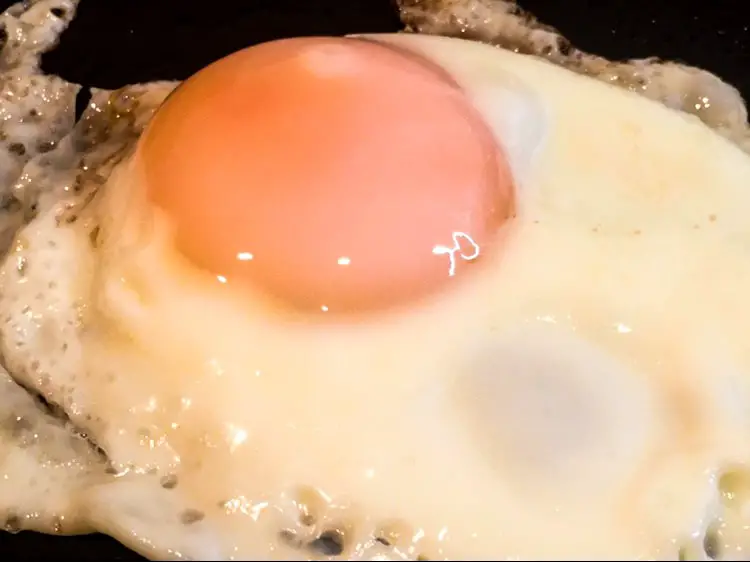
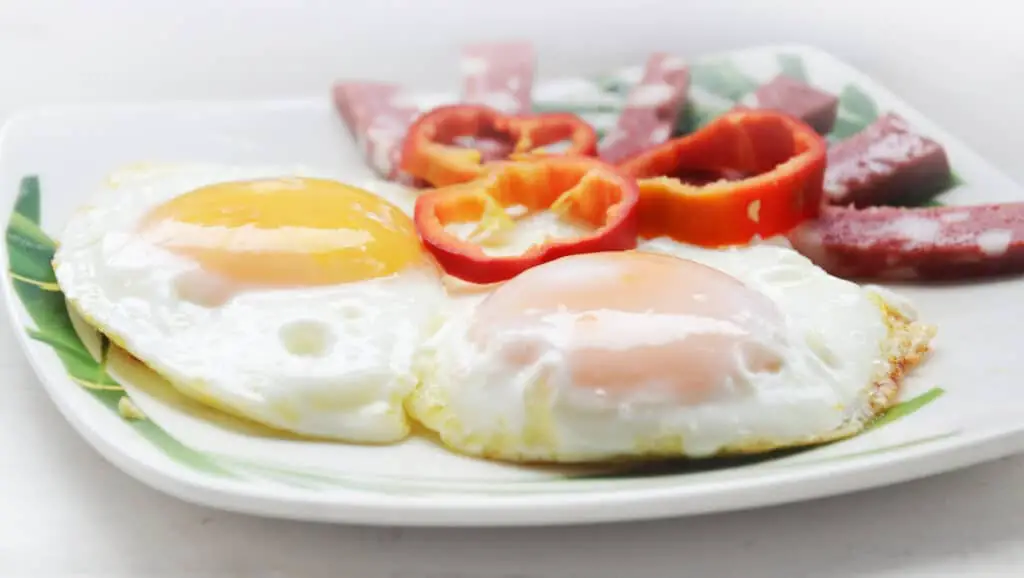
By covering it for a part of the process and letting some steam in there, the egg will cook faster with less chance for the bottom to burn.
Tip 2: Chopsticks…it ain’t just for us asians!
Growing up in South East Asia, chopsticks for me were the way to go for many dishes. From glorious iterations of pad thai noodles (ผัดไทย) all the way to predominant rice-based dishes, the best being located in and among the rich ventricular alleyways of Bangkok’s culturally opulent city.
Chopsticks were/are a normal thing to eat with.
But I’m here to tell you that they can be used for your eggs as well!
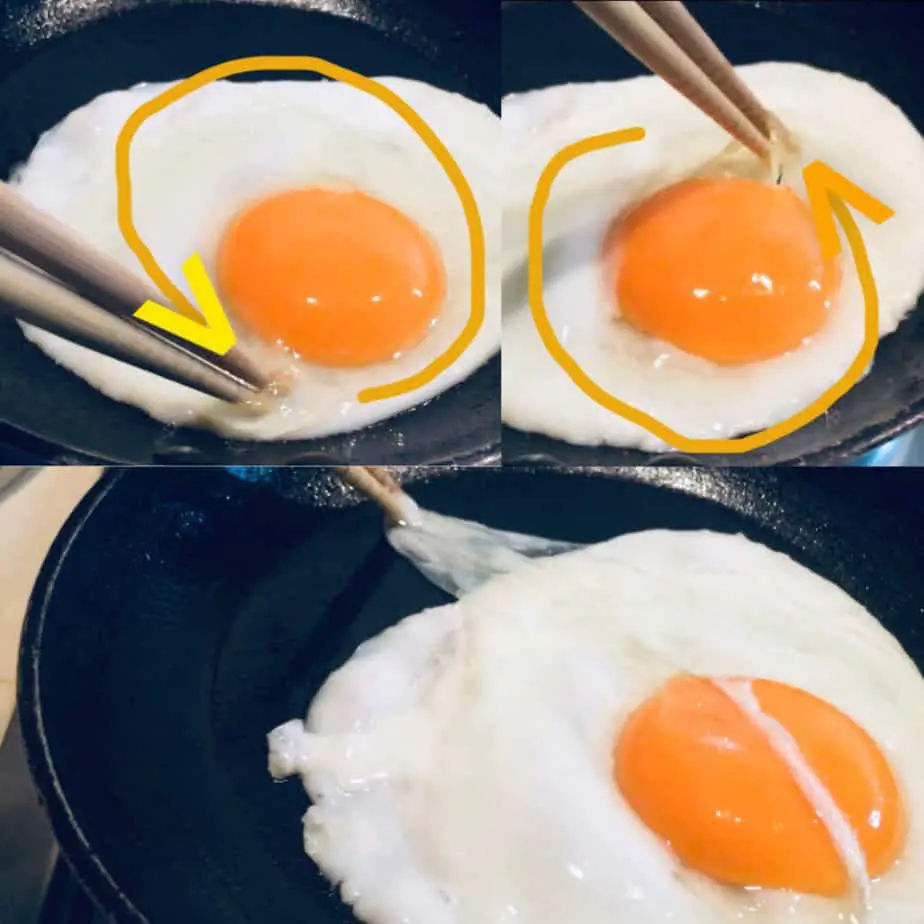
As you can see from the picture, insert your chopsticks near the egg yolk, and then begin “whisking” in a controlled circular motion (in either direction) around your egg yolk. The goal is for the “goopy” bit around the yellow part to latch on to your chopsticks, much like twirling a fork in a plate of spaghetti.
Then once enough of the “goopy” bit has latched on, simply drag it out of the actual egg and onto the pan, allowing it to cook better.
Bonus tip: Use the “Leidenfrost effect”
Not compleltly related but a cool tip I thought I’d give, if you want to make sure your food doesn’t stick to your pan (like actually), simply throw some water in your pan and watch what happens.
Alot of the time food tends to get stuck on the surface as the pan hasn’t reached the ideal cooking temperature yet (around 160C or 320F). By heating up your pan adequately beforehand you’ll ensure that nothing ever gets stuck on it again.
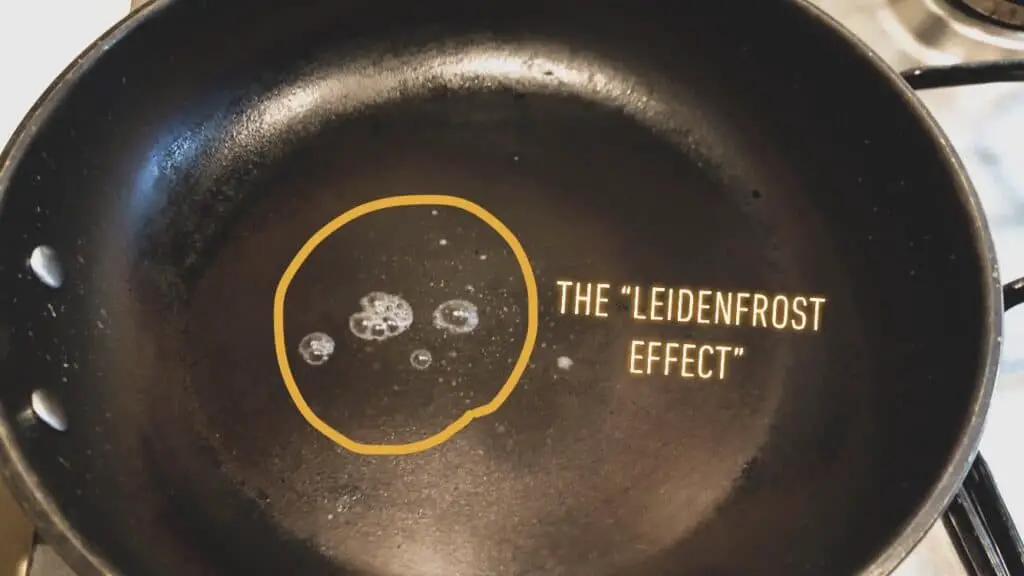
The “Leidenfrost effect” is a phenomenon in which the surface or pan is at a significantly hotter temperature than that of the liquid’s boiling point. This produces an insulating vapour that keeps the liquid from boiling rapidly.
So to find out the ideal temperature for cooking, simply throw some water in your pan the next time it’s being heated on the stove and check- if the water droplets roll around the skillet then that means the pan has reached the ideal temperature in heat (around 160C), ensuring nothing ever gets stuck on your pan again. Including your eggs!
Stay Rogue.

